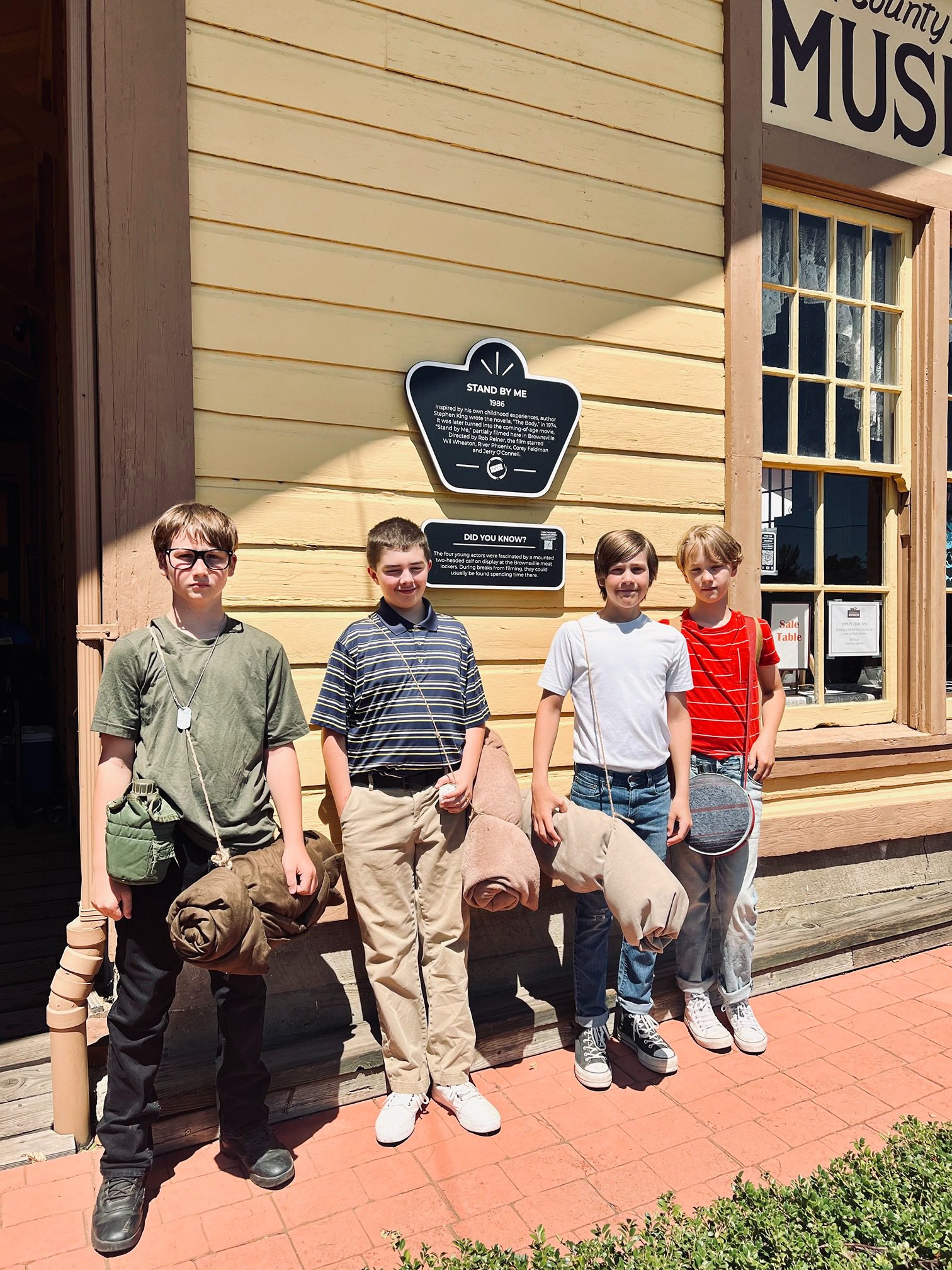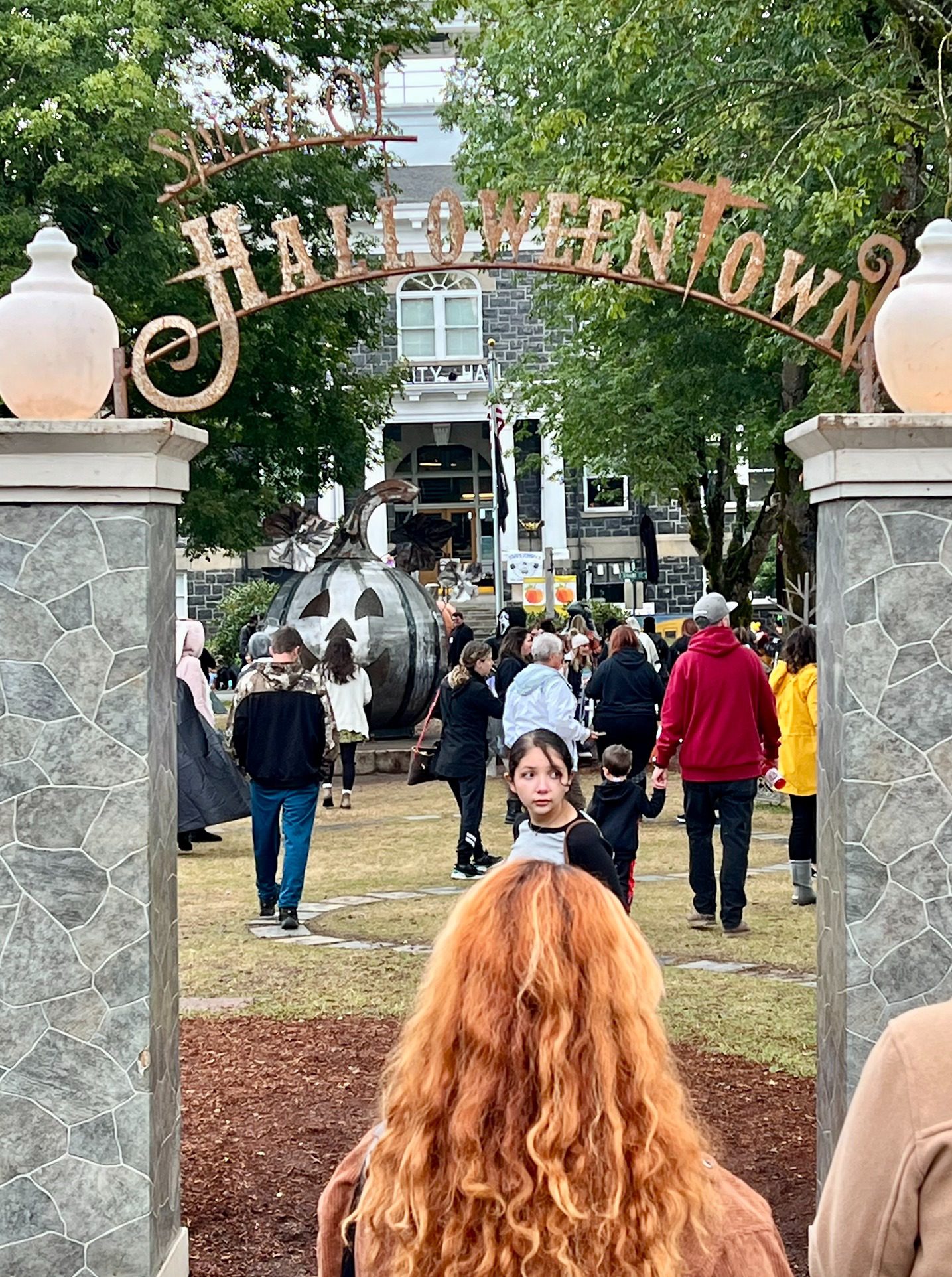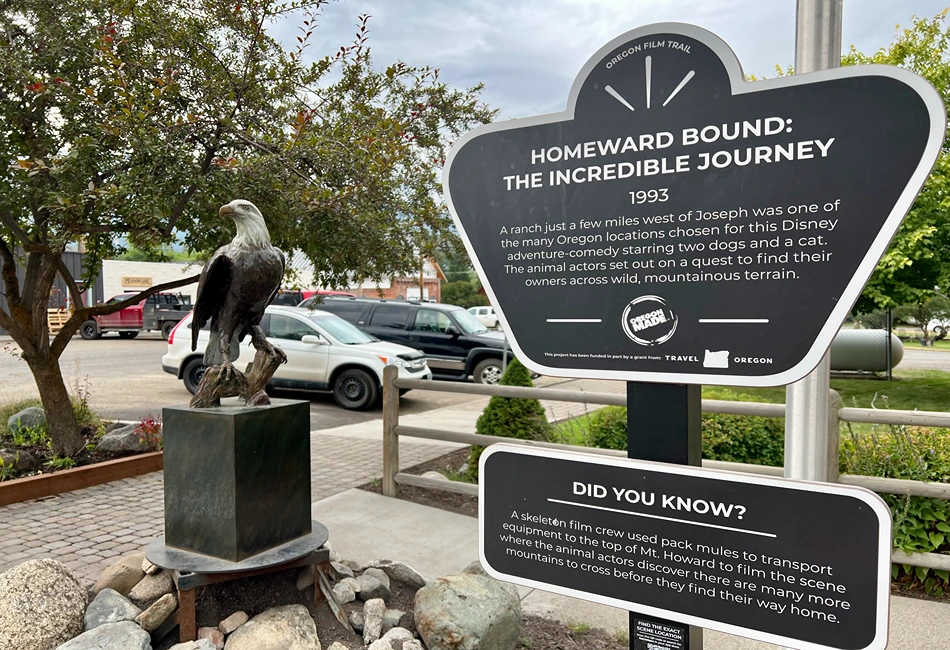The Oregon Film Trail is dedicated to showcasing phenomenal filming locations while putting small towns on the map.
Film tourism, set-jetting, screen tourism – whichever you prefer to call it – this growing trend is bringing in over 105 million visitors to real-world locations around the globe every year, and the impact is evident. Film locations have a life of their own beyond their role as mere backdrops in movies or TV shows. In fact, in the world of film tourism, the location itself often becomes the starring role, offering both cultural enrichment to the visitor and economic benefits to the community in which the location exists. As a result, film tourism in communities of all sizes is flourishing worldwide and is currently a 66-billion-dollar industry with expectations of it to grow to $118.6B by 2030.* Surprisingly, small towns are not disadvantaged compared to larger markets and can benefit equally from this form of tourism.
Looking for the perfect film location? Get your free copy of Destination Film Guide and uncover unique locations, production resources, and expert insights.

Stand By Me Day Festival in Brownsville. Photo Credit: Jane Ridley
Emotional Connection Drives Film Tourism
Filmed content evokes strong feelings, and fans’ desire to immerse themselves in the stories and characters they love has fueled the concept of “set-jetting.” According to Expedia’s 2023 global survey of 20,000 people, almost 30% of travelers disclosed that movies and TV shows were more influential than destinations on Instagram, Facebook, or TikTok combined. Fast forwarding to this year, Expedia’s “Unpack 25 Trends Report” revealed that 66% of travelers said their trips had been influenced by locations seen in movies or TV shows.* There is no doubt this travel trend is growing, and many travel outlets are making a case that it is here to stay.
Learn more about the benefits of film tourism with this short video from Oregon Film.
Benefits of the Oregon Film Trail
Oregon is ahead of the curve when it comes to positioning the state to benefit from film tourism and has already laid the groundwork to capture revenue and promote cultural benefits with the development of the Oregon Film Trail, the first physical statewide film trail of its kind in the country.
The Trail currently has 43 physical markers in all seven tourism regions of Oregon (and growing), with hundreds more digital scene locations available to explore using the partner app SetJetters. Additionally, the app makes it possible to gather the visitor numbers for each Trail marker and location on the map, and by using data tools and analytics, SetJetters can extrapolate useful economic statistics.
For example, the movie Wild (2014) was shot in multiple rural communities and locations throughout Oregon and contributed $9.725M in direct Oregon spend. SetJetters’ data estimated that, to date, film tourists in Oregon have spent as much as $2.62M since the release of this one film alone. Last year, a small town in eastern Oregon welcomed 400 film tourists eager to visit locations of the 1993 movie Homeward Bound: The Incredible Journey. This equated to a $474M increase in visitor revenue over the biennium, thanks to a film over 30 years old.
It is not only tourists who can appreciate experiencing a film location in real life. Local communities can benefit in multiple ways, too:
- Economic opportunities for tours and themed businesses.
- A raised profile and pride in the community.
- New marketing opportunities and connections to other towns and cities that have also played host to a “shared” filmed project.

Wild filming location in Ashland. Photo Credit: Jane Ridley
The Oregon Film Trail: Transforming Towns into Living Landmarks
The Oregon State Hospital Museum of Mental Health is a popular stop on the Oregon Film Trail. It commemorates the classic One Flew Over the Cuckoo’s Nest (1975). The museum has dedicated some space to an exhibit detailing the making of the movie at the Oregon State Hospital. An hour and a half away is the small fishing town of Depoe Bay, also a location backdrop of a memorable “Cuckoo’s Nest” scene shot at the harbor. Now that the two communities are on the Oregon Film Trail and forever linked by the film, there are more opportunities to cross-promote to visitors and local community members alike.
Over time, locations can become the main character in their own right. Astoria is a prime example of this – once the backdrop for The Goonies (1985), it’s now inseparable from the fictional “Goondocks” in the minds of visitors. Many locations transform into “living landmarks” or outdoor museums.

The Spirit of Halloweeentown in St. Helens. Photo credit: Jane Ridley
The river port town of St. Helens, having been featured in multiple filmed projects such as Halloweentown (1998), Twilight (2008), and Logic’s Paradise Records (coming 2025), among others, is no exception. St. Helens has successfully turned their filming experience as a backdrop location to multiple projects into a starring role for the city. They started with a humble celebration parade in 1998 to commemorate the release of the Disney TV movie Halloweentown, which has now grown into a weeks-long fall festival, The Spirit of Halloweentown, that draws over 50,000 visitors yearly to this small city of almost 15,000. Additionally, Twilight fans often attend the festival as part of their fall exploration tour of Oregon’s film locations. They can even book an overnight stay in St. Helens at the Twilight Swan House, the real-life location of Twilight’s main female character, Bella Swan.
Further south in Willamette Valley’s scenic, rural small town of Brownsville (population 1,899), set-jetters from all over the world visit year-round but descend en masse on the 4th Saturday each July. They come to experience the Stand By Me Day Festival, dedicated to the nostalgia of the coming-of-age movie of the same name. Brownsville transforms into the fictional town of 1950’s “Castle Rock,” making it difficult to tell the difference between the two.
Why Maximizing Location Assets Matters
All these examples are clear evidence of small Oregon towns and cities maximizing their location assets long after production has left. By hosting film tourism events and other engagement opportunities, towns can maximize the economic benefits from visitors’ spending on lodging, food, merchandise, local tours, and services. This increased visibility also strengthens, preserves, and builds on town pride, culture, and long-term identity. Popular films can attract thousands of visitors to events such as Goonies Day, held each June in Astoria. With careful marketing and thoughtful engagement opportunities, the city has managed to maintain a balance between its small-town charm and welcoming a large volume of film tourists and local residents alike.
As film tourism continues to grow, so will the building of new tourism features such as AR and VR experiences, oral history stories, specialty tours, creative suggested itineraries, and much more.
So, What’s Next for Film Tourism in Oregon?
The Oregon Film Trail will expand, adding more Trail markers to the map and additional scene locations to the SetJetters app for people to explore and discover, as well as interactive engagement features, such as a push-and-play oral history initiative, “stories behind the story” currently in development for the Oregon Film Trail. Film tourism will continue to breathe new life into small towns in a fresh new way, and whether they are the star of a lesser-known small indie film or a larger budget, well-known feature, the right balance of physical signage, digital tools, and the careful management of filming locations, means communities will thrive while still maintaining their small-town charm.
Learn more when you watch Oregon Film’s short video about film tourism in their state!
We hope to see you on the Trail!
By Jane Ridley
Dir. of Strategic Initiatives + Community Projects
Oregon Film + Oregon Film Trail
Find the perfect setting for your next project! Join our newsletter for expert location insights, industry news, and filming incentives—all free!



